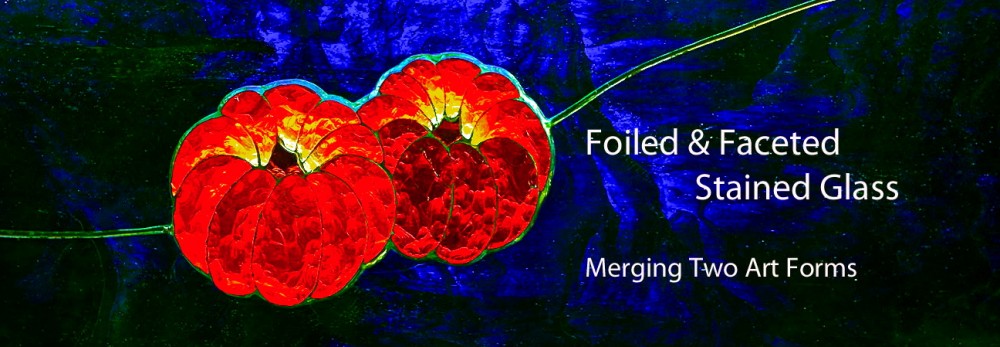One of the multiple benefits of including faceted glass into a traditional foiled panel is the enhanced ability to provide a greater sense of depth. The faceting provides the ability to vary the thickness of the glass and to also alter the intensity and saturation of the color within the same piece glass without an interposed lead line. A single sheet of glass may have the necessary color changes appropriate for this purpose but finding such a sheet may prove to be difficult. It may be possible to achieve similar results by using some combination of fusing, slumping, molding and glass painting but I have no experience with any of these techniques. In 2014 I bought a kiln and have started working with fused glass, see section on FUSED FACETED listed above.
After considerable experimentation, I identified four elements which in combination contribute to a feeling of depth. These included a fairly gradual but significant change in color towards a specific point in an element, lead lines curved toward the same point, decreasing the thickness of the glass towards that point and an abrupt adjacent change in color or saturation. All of these components were utilized in the flower imaged below.
 I also found that going from a darker to a lighter color towards the central point seems to be more effective than going from a lighter to darker color.
I also found that going from a darker to a lighter color towards the central point seems to be more effective than going from a lighter to darker color.








